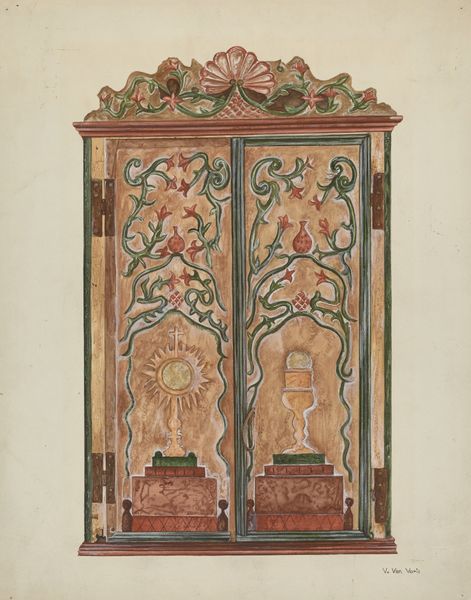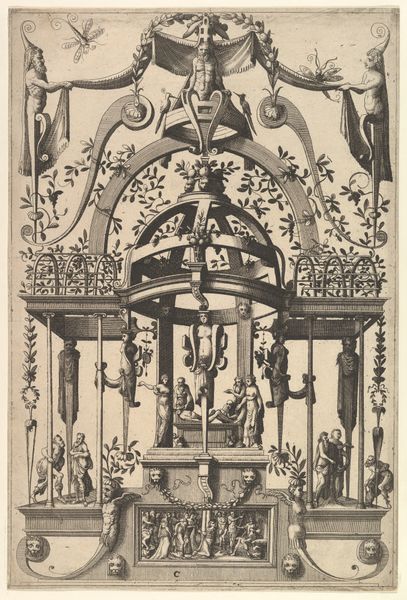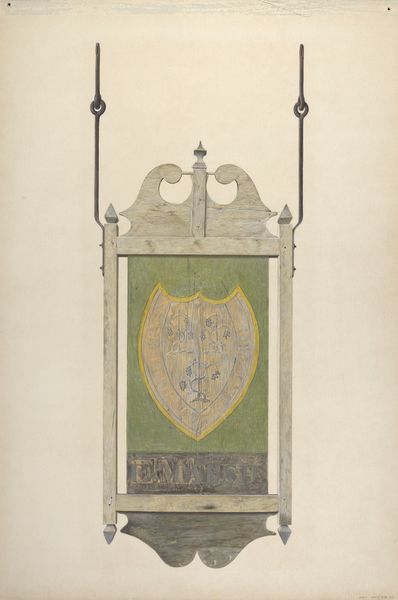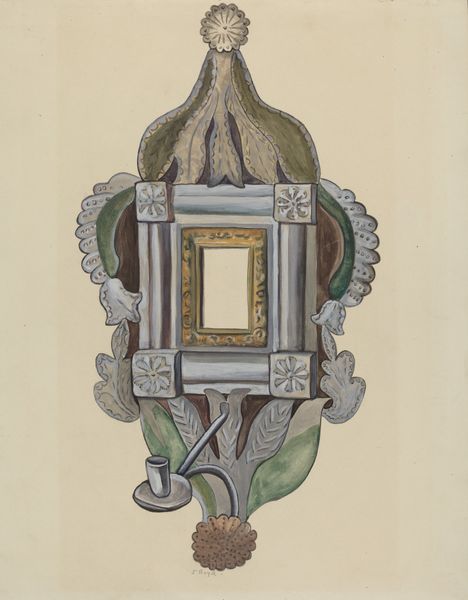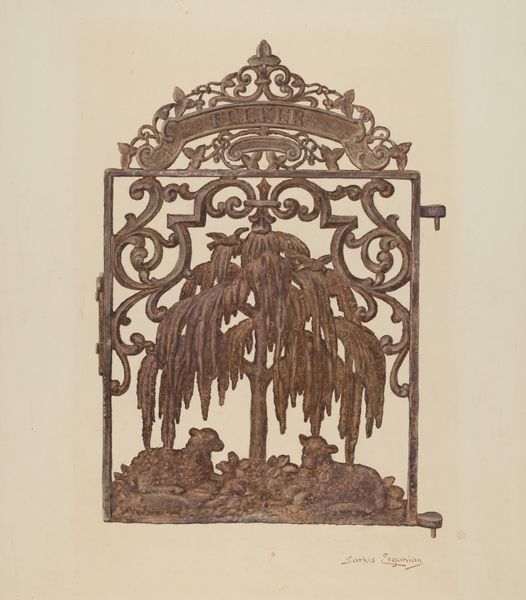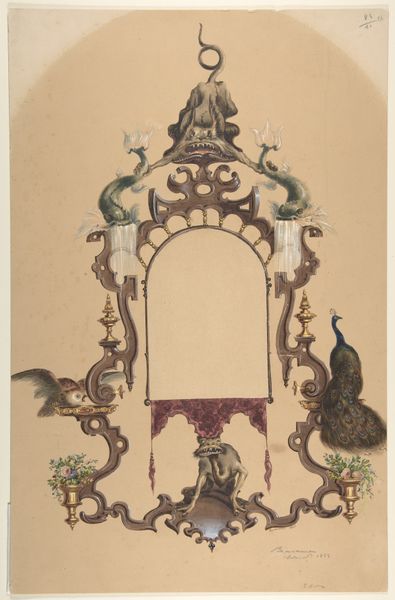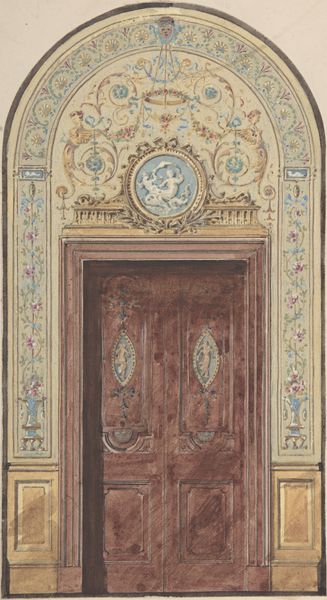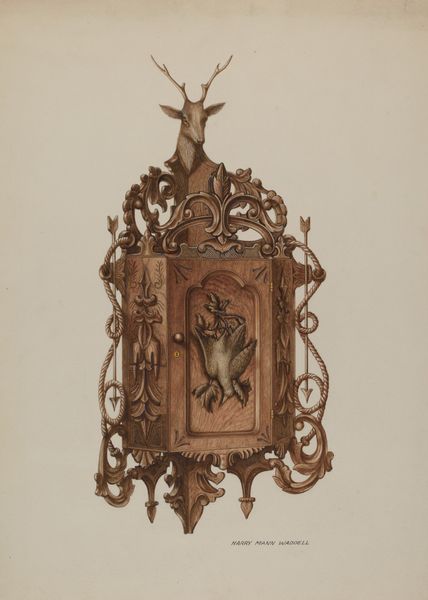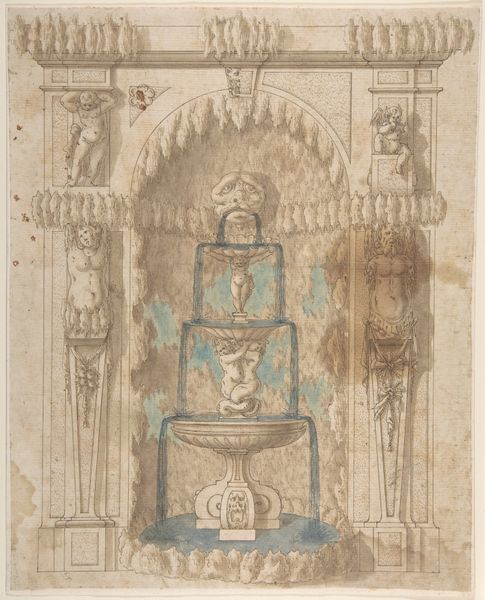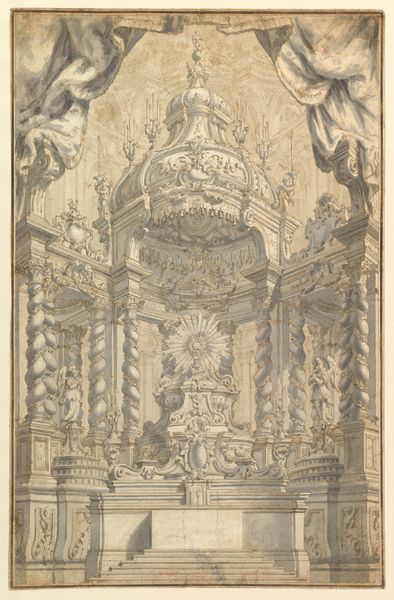
drawing, painting, plein-air, wood
#
drawing
#
muted colour palette
#
painting
#
plein-air
#
sculpture
#
traditional architecture
#
wood
#
genre-painting
Dimensions: overall: 55.1 x 40.6 cm (21 11/16 x 16 in.) Original IAD Object: 36 1/4" wide; 54" high
Copyright: National Gallery of Art: CC0 1.0
Editor: Here we have J. Alderman's Tavern Sign from around 1940, a painted wooden sign. I’m struck by the visible wood grain, it's very tactile, like it wants to be touched. What can you tell me about it? Curator: Immediately, I see the importance of material culture. This isn't just about representing a tavern; it's about the means of doing so. The choice of wood, its visible grain, even the rather crude painting style, speaks volumes. It emphasizes the hand-made, local nature of tavern culture. How do you think the material affects its purpose as an advertisement? Editor: Well, the texture makes it feel…older, maybe? Less slick than modern signs. Almost like folk art, drawing people in with its rustic charm. Curator: Precisely! And think about where this sign would have hung. A dusty roadside, exposed to the elements. The weathering, the aging of the wood – it all becomes part of the sign's narrative. It's a form of vernacular architecture, communicating through material rather than grand design. We should consider the socio-economic conditions that valued, or even necessitated, this kind of material resourcefulness. What does the imagery of the bull contribute in this context? Editor: Maybe the bull projects a sense of strength, dependability? It's a place you can rely on, solid as an ox. Curator: Indeed, but also consider the meat trade, agriculture...the bull, like the wood, is tied to material resources and labor. These signs weren't just advertisements; they were reflections of a specific social and economic landscape, created through accessible methods. What are your thoughts on that? Editor: It makes me realize I usually overlook the materials themselves. This sign isn't just a picture, it's also a record of production and the world it came from. Curator: Exactly! Seeing art through the lens of materiality opens up a whole new understanding of its cultural significance.
Comments
No comments
Be the first to comment and join the conversation on the ultimate creative platform.
